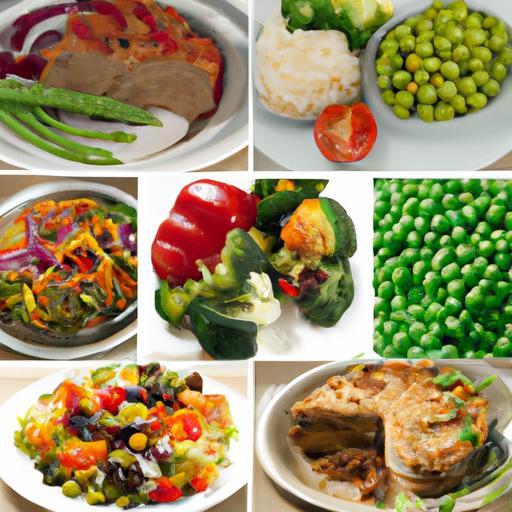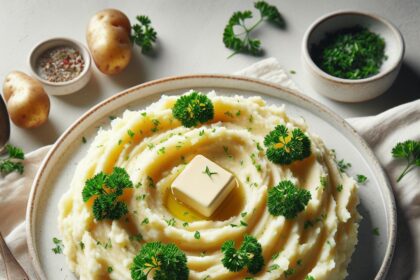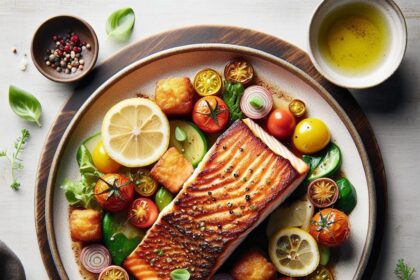In the bustling world of pet care, every detail counts-from morning cuddles to mealtime magic. Yet, one crucial aspect often slips under the radar: how we store our pet’s food. Imagine cracking open a bag of kibble only to find it stale, or worse, tainted by moisture and pests. Not only does this dampen the flavor your furry friend loves, but it can also impact their health. Welcome to Fresh & Flavorful: Ultimate Guide to Storing Pet Food Right, where we unravel the secrets to keeping your pet’s meals as vibrant and nourishing as the day they were made. Dive in to discover practical tips, clever hacks, and expert advice that will transform your pantry into a haven of freshness-because your pet deserves nothing less than the best.
Fresh & Flavorful: Ultimate Guide to Storing Pet Food Right
Fresh & Flavorful: Ultimate Guide to Storing Pet Food Right begins with selecting the ideal containers that keep your beloved pet’s meals as tasty and nutritious as the day you opened them. Whether you’re stashing kibble, canned meals, or raw diets, understanding proper storage is key to extending shelf life and preserving every bite’s nutritional integrity. From airtight vessels to savvy pantry spots, this guide transforms pet food storage into an art form.
Prep and Cook Time
- Preparation: 10 minutes
- Storage setup: Instant
Yield
- Optimal freshness for 30+ days, depending on food type and storage practices
Difficulty Level
- Easy
Ingredients
- Opaque, airtight container with a secure lid (preferably BPA-free plastic or glass, capacity varies based on pet food volume)
- Vacuum sealer or vacuum bags (optional, enhances preservation for opened packages)
- Cool, dry storage area (temperature-controlled, away from sunlight and humidity)
- Labeling supplies: waterproof marker or reusable tags
- Measuring scoop (clean and dry, dedicated to pet food only)
Instructions
- Transfer pet food immediately after opening into an opaque, airtight container to minimize exposure to air, light, and moisture. This slows degradation and flavor loss.
- Seal containers tightly. Avoid loosely secured lids or bags which allow aromas and nutrients to escape, inviting stale or rancid odors. Use vacuum sealing for long-term storage.
- Choose the optimal storage location. Place containers in a cool (ideally below 70°F), dry area like a pantry or dedicated pet food cabinet. Avoid basements, garages, or direct sunlight where heat and humidity fluctuate.
- Label your containers with the opening date and type of pet food. This simple step keeps spoilage in check and helps you rotate older products to the front.
- Monitor shelf life and expiration dates. Dry pet foods can last 6-12 months unopened, but once open, best used within 4-6 weeks. Canned or wet foods require refrigeration after opening and ideally consumed within 2-3 days.
- Keep measuring tools clean and dry. Use a scoop solely for pet food handling to avoid contamination or moisture introduction, both of which compromise food quality.
- Regularly inspect stored pet food. Look for changes in smell, texture, or color. Discard anything that shows signs of mold or insect infestation immediately.
Tips for Success
- Keeps pet food fresh and flavorful by avoiding excessive exposure to air and temperature swings.
- Opt for stackable containers to maximize storage space and maintain an organized feeding station.
- Consider separating bulk purchases into smaller portions for easier use and less contamination risk.
- For raw or frozen diets, store in airtight freezer-safe bags and thaw portions in the refrigerator before serving.
- Consult your pet’s manufacturer guidelines and veterinary advice for recommended storage times and practices.
Serving Suggestions
- Present meals straight from well-maintained containers to preserve freshness at feeding time.
- Enhance presentation by spooning food into clean bowls and topping with fresh herbs (like chopped parsley) safe for pets to add aroma and variety.
- Keep water bowls refreshed and nearby to complement well-stored, flavorful meals perfectly.
- For homemade pet treats, store in separate airtight jars labeled with dates to coordinate with regular meal rotation.
| Pet Food Type | Typical Shelf Life (Unopened) | Best After Opening | Recommended Storage |
|---|---|---|---|
| Dry Kibble | 6-12 months | 4-6 weeks (airtight) | Cool, dry pantry container |
| Wet/Canned Food | 2-5 years | 2-3 days refrigerated | Refrigerated in sealed container |
| Raw/Frozen Diet | 3-6 months frozen | 24-48 hours refrigerated after thawing | Airtight freezer bags, thaw in fridge |
For a complete understanding on pet nutrition preservation, explore our Healthy Homemade Pet Food Tips article. Also, according to American Veterinary Medical Association, storing pet food in appropriate containers and conditions is vital to prevent contamination and maintain quality.

Q&A
Q&A: Fresh & Flavorful – Ultimate Guide to Storing Pet Food Right
Q1: Why does proper pet food storage matter?
A1: Just like humans, pets thrive on fresh and nutritious meals. Proper storage preserves the food’s flavor, nutrients, and safety. It prevents spoilage, mold, and harmful bacteria, ensuring your furry friend gets every tasty bite-fresh, flavorful, and healthy!
Q2: What’s the best place to store dry pet food?
A2: Keep dry pet food in a cool, dark, and dry spot. Avoid warm places like near ovens or direct sunlight, which can speed rancidity. A pantry or a cupboard away from humidity is ideal. Temperature fluctuations and moisture are the enemy of crunch!
Q3: Should I keep pet food in its original bag or switch containers?
A3: The original packaging is designed to keep food fresh, often with special linings. The trick? Store the bag inside an airtight container. This combination locks in freshness while providing extra protection from pests and air exposure.
Q4: How important is an airtight container?
A4: Crucial! An airtight container shields pet food from moisture, oxygen, and pesky critters. Choose containers made of BPA-free plastic, glass, or metal with a strong seal. This keeps flavors locked in and prevents the kibble from turning stale or soggy.
Q5: What about wet pet food? Can it be stored similarly?
A5: Wet or canned food is a different beast. Once opened, transfer leftovers into an airtight container and refrigerate. Consume within 2-3 days for peak freshness. Never leave wet food out for more than a couple of hours, or bacteria can party in your pet’s dish.
Q6: Can I freeze pet food?
A6: Absolutely! Freezing is great for bulk dry food or homemade recipes. Just portion it out properly and use airtight freezer bags. When ready, thaw gradually in the fridge. Keep in mind, freezing might slightly change texture but won’t harm nutrition.
Q7: How often should I clean my pet’s food container and bowls?
A7: Regular cleaning is key to freshness and health. Aim to wash food containers monthly with warm, soapy water. Bowls? Scrub daily to prevent buildup of oils and bacteria. This keeps mealtime safe, tasty, and inviting.
Q8: How can I tell if pet food has gone bad?
A8: Spoiled pet food might smell rancid or sour, look discolored, or have off-putting clumps. If you see mold or pests, toss it immediately. Your pet’s health always comes first, so trust your nose and eyes!
Q9: Are specialized storage tips different for various types of pet food?
A9: Yes! Dry kibble loves airtight cool spots; wet food needs refrigeration after opening; raw or homemade diets may require freezing and strict hygiene. Tailor your storage strategy to the type of food for ultimate freshness.
Q10: Any quick tips for busy pet parents?
A10: Sure! 1) Buy pet food in amounts your pet can finish before expiration. 2) Label containers with opening dates. 3) Store small portions in portion-sized containers to avoid exposing the whole batch repeatedly. Freshness without fuss-your pet will thank you!
Key Takeaways
In the end, keeping your pet’s food fresh and flavorful isn’t just about preserving taste-it’s about safeguarding their health and happiness. By mastering the art of proper storage, you provide your furry friend with every bite packed full of nutrients and goodness. So, whether you choose airtight containers, spot the signs of spoilage, or carefully monitor expiration dates, your commitment to smart storage turns mealtime into a truly nourishing experience. Here’s to happy pets and well-stored meals-because when it comes to their food, freshness is the ultimate flavor enhancer.








